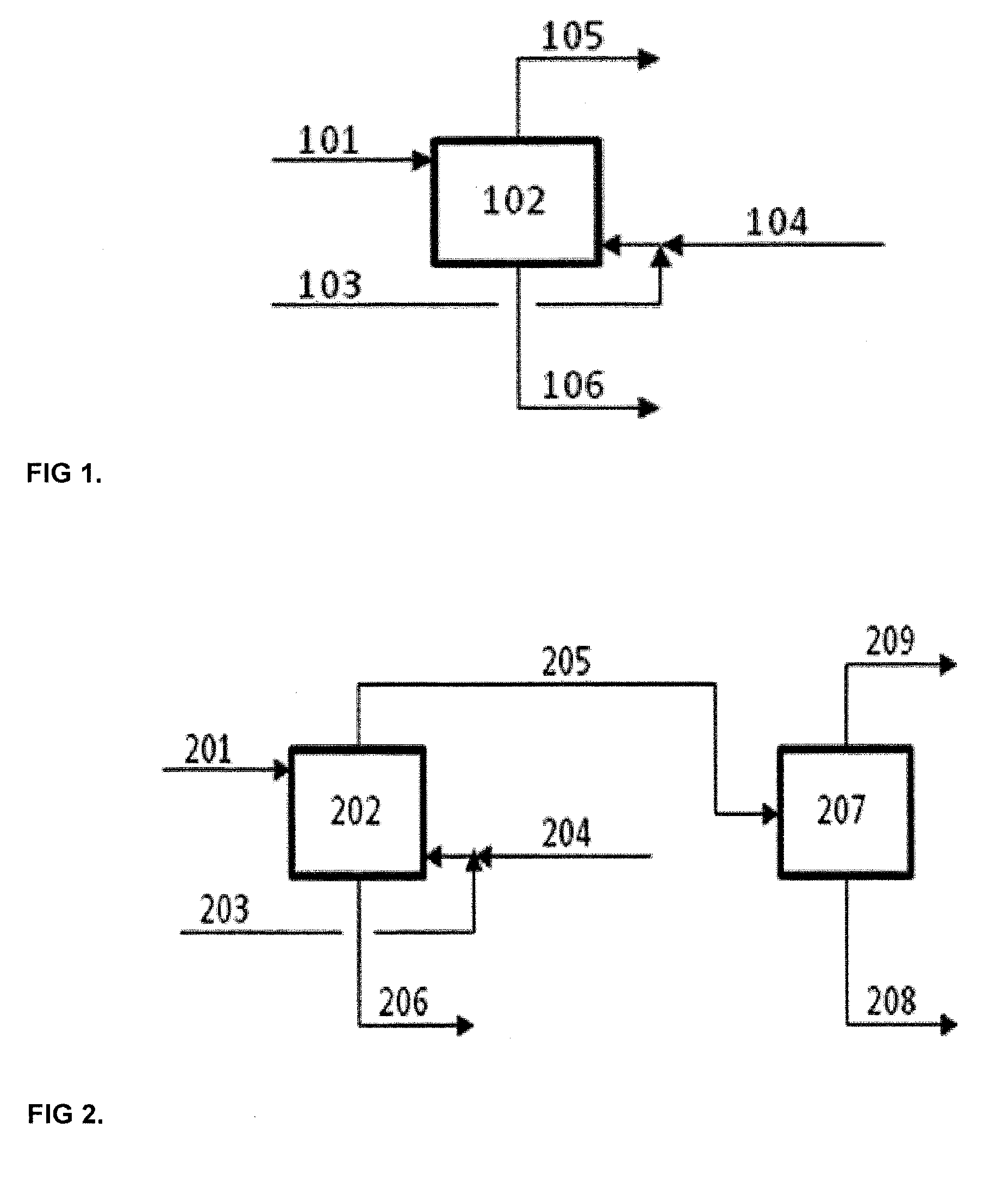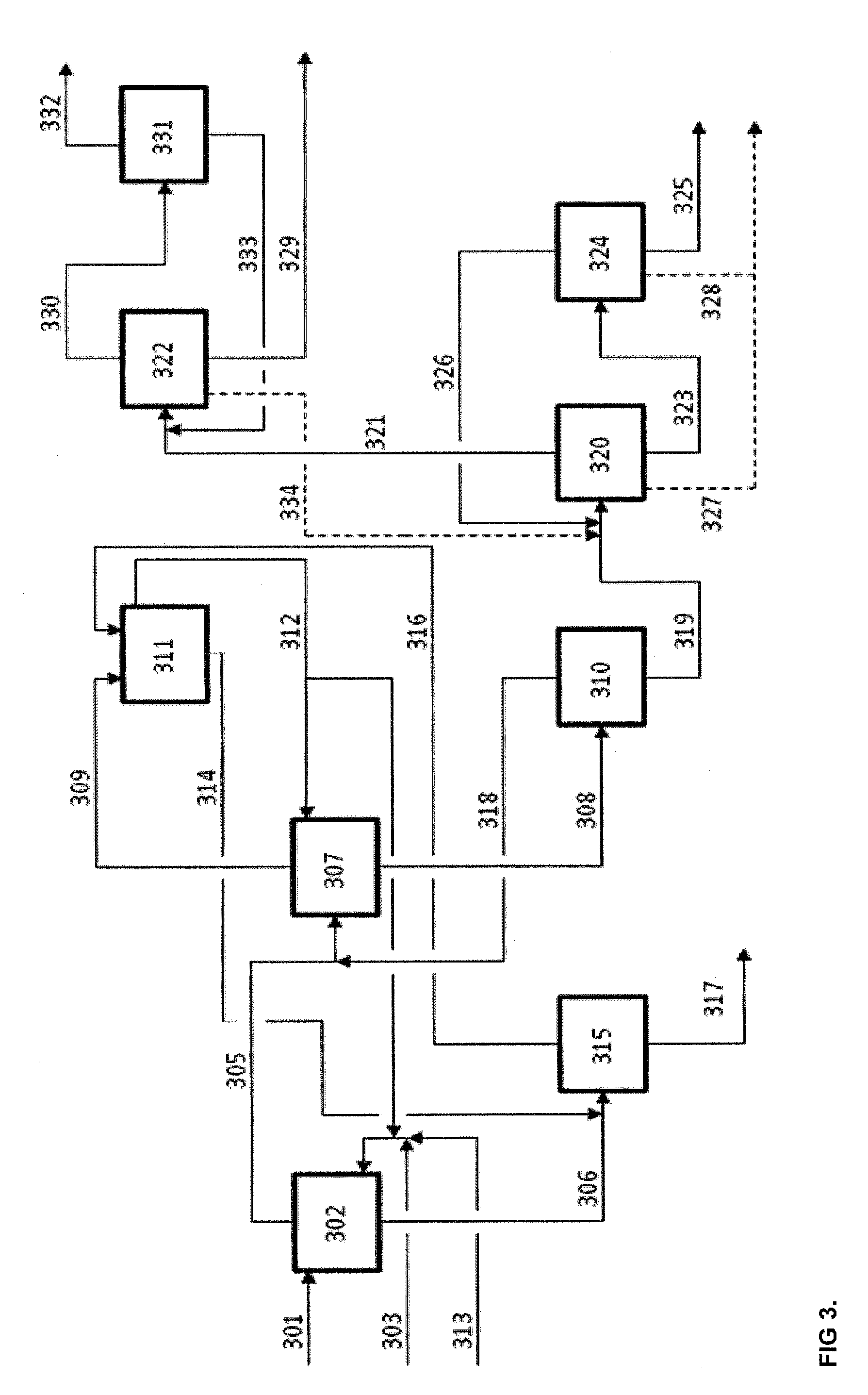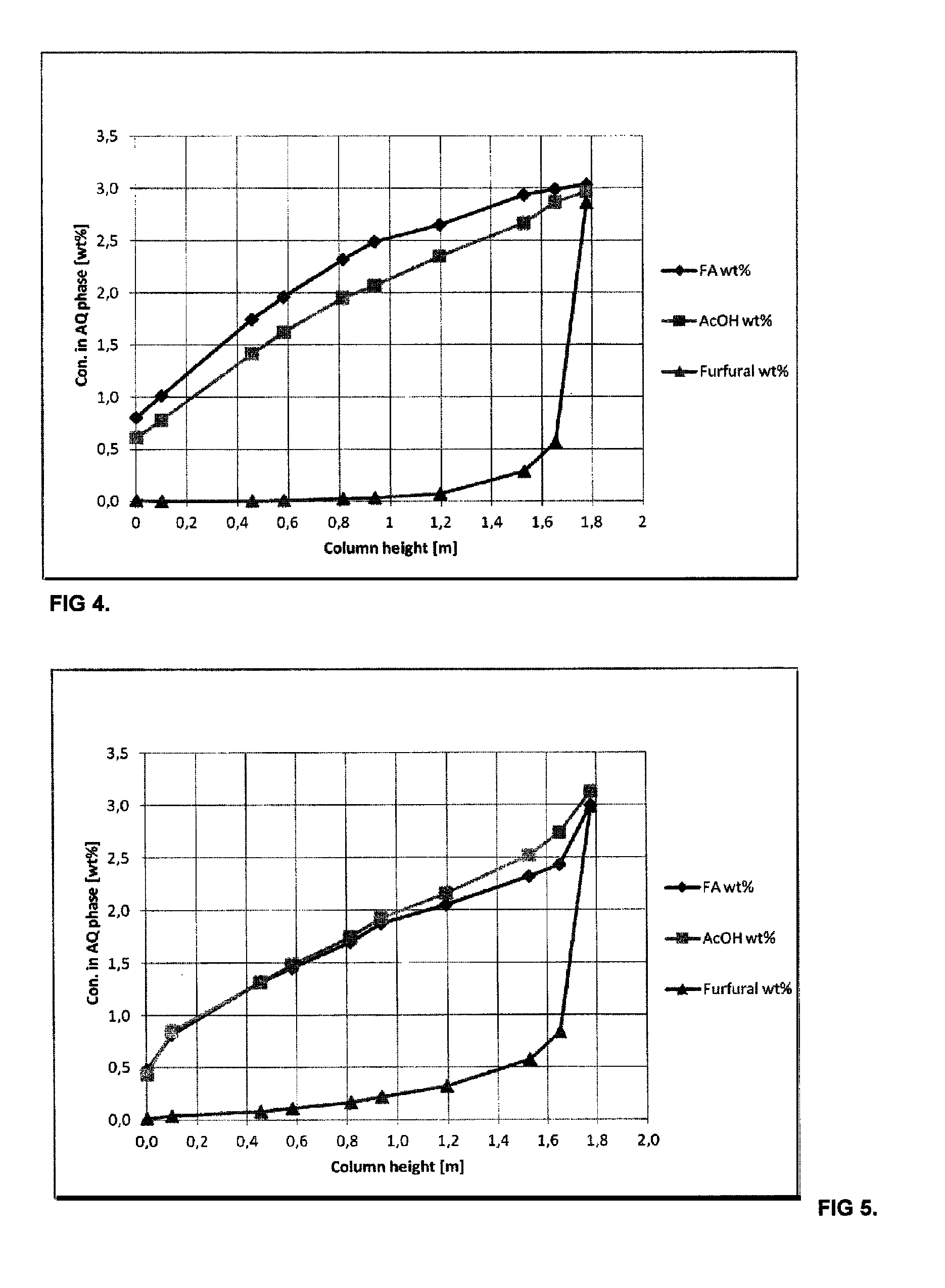Method and an arrangement for separating at least one carboxylic acid and furfural from a dilute aqueous mixture thereof
a technology of organic acid and furfural, which is applied in the direction of solvent extraction, carboxylic compound separation/purification, organic chemistry, etc., can solve the problems of difficult further processing, difficulty in obtaining acid, and insufficient efficiency of extraction agents, so as to facilitate the separation of carboxylic acid(s) and furfural, good extraction properties, and overall yield
- Summary
- Abstract
- Description
- Claims
- Application Information
AI Technical Summary
Benefits of technology
Problems solved by technology
Method used
Image
Examples
example 1
[0060]Aqueous solution, which contained 3.0 wt-% formic acid (FA), 3.0 wt-% acetic acid (AcOH) and 2.9 wt-% furfural (FUR) was fed to the top part of agitated bench scale Kühni extraction column at the rate of 3.31 kg / h, where it was extracted in a counter-current mode with 2-methyltetrahydrofurane (2-MTHF) fed at the rate of 1.73 kg / h to the lower part of the column. Mass ratio of aqueous to organic feed was 1.91. The diameter of the extraction column was 55 mm and effective height of the column was 1.75 m with 50 mixing chambers each equipped with turbine impeller. The column had a settling zone in the top and bottom part. Organic phase was dispersed into the continuous aqueous phase at the agitation rate of 250 rpm. A clear liquid-liquid interface existed in the upper settling zone. Extraction temperature was 35-45° C. Extract was drawn from the top of the column at the rate of 1.81 g / h. The composition of the extract was 4.1 wt-% formic acid, 4.4 wt-% acetic acid, 5.2 wt-% furfu...
example 2
[0064]Aqueous solution, which contained 3.0 wt-% of formic acid (FA), 3.1 wt-% acetic acid (AcOH) and 3.0 wt-% furfural was fed to the top part of agitated bench scale Kühni extraction column at the rate of 3.67 kg / h. It was extracted in a counter-current mode with 2-methyltetrahydrofurane (2-MTHF), which was fed at the rate of 1.88 kg / h to the lower part of the column. In this example 2-MTHF contained 4.7 wt-% water, which mimicked the actual water concentration in recycled extractant. Mass ratio of aqueous to organic feed was 2.1. The diameter of the extraction column was 55 mm and effective height of the column was 1.75 m with 50 mixing chambers each equipped with turbine impeller. The column had a settling zone in the top and bottom part. Aqueous phase was dispersed into continuous organic phase at the agitation rate of 250 rpm. A clear liquid-liquid interface existed in the lower settling zone. Extraction temperature was 35-45° C. Extract was drawn from the top of the column at...
example 3
[0068]2-methyltetrahydrofurane (2-MTHF) and dissolved water present in the extract from Example 1 or Example 2 were separated from formic acid, acetic acid and furfural mixture by distillation at ambient pressure. 474 g / h of extract with the analyzed composition of 4.1 wt-% formic acid, 4.7 wt-% acetic acid, 5.8 wt-% furfural, 11.9 wt-% water and the rest was 2-MTHF was fed at 73° C. to the middle of a continuously operating bench distillation column. Column diameter was 30 mm and the total effective height of four sections of structured packing type Sulzer EX was 0.88 m. Distillate vapor i.e. 2-MTHF-water azeotrope was condensed at about 72° C. and directed to a continuously operating decanter. Upper 2-MTHF phase from decanter, which contained 5.1 wt-% of water was split so that part was circulated to extraction at the rate of 360 g / h and part was fed as reflux back to distillation column at the rate of 400 g / h. Column reflux ratio was 1.1 in terms of organic phase. Lower aqueous p...
PUM
| Property | Measurement | Unit |
|---|---|---|
| pressure | aaaaa | aaaaa |
| temperature | aaaaa | aaaaa |
| temperature | aaaaa | aaaaa |
Abstract
Description
Claims
Application Information
 Login to View More
Login to View More - R&D
- Intellectual Property
- Life Sciences
- Materials
- Tech Scout
- Unparalleled Data Quality
- Higher Quality Content
- 60% Fewer Hallucinations
Browse by: Latest US Patents, China's latest patents, Technical Efficacy Thesaurus, Application Domain, Technology Topic, Popular Technical Reports.
© 2025 PatSnap. All rights reserved.Legal|Privacy policy|Modern Slavery Act Transparency Statement|Sitemap|About US| Contact US: help@patsnap.com



